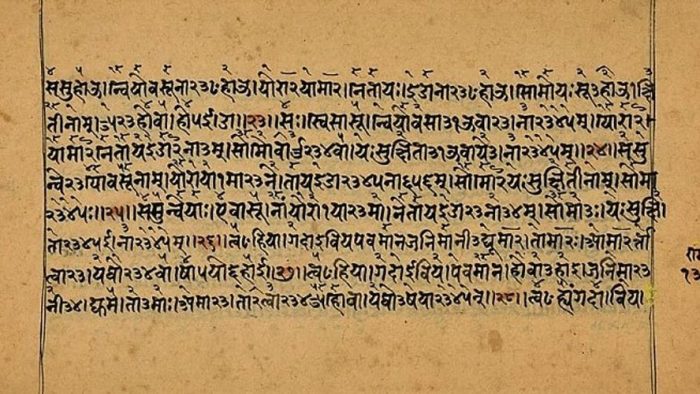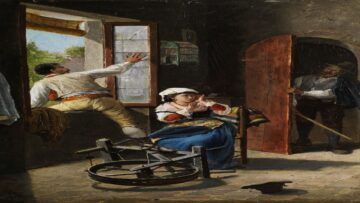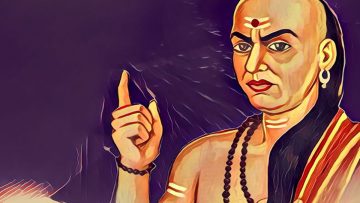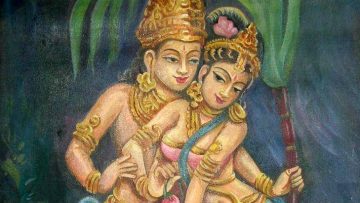नीतिशास्त्रामृतं धीमानर्थशास्त्रमहोदधेः l
समुद्दध्रे नमस्तस्मै विष्णुगुप्ताय वेधसे ll
(कामन्दकीय-नीतिसारः 1.6)
[ Salutation to that wise Vishnugupt, who was proficient and also prudently collated the nectar in form of Niti-shastra from the big ocean of Artha-shastra ] – Kamandakiya–Nitisara 1.6
Human life is divided among four Purushartha – Dharma, Artha, Kama and Moksha. To understand Dharma, study of Dharmashastra texts is essential, For Kama, study of Kamashastra texts while for Moksha, study of texts related to Moksha is essential. Same way, to understand, implement and practice Artha, study of Arthashastra texts is essential.
Kautilya’s Arthashastra is the oldest available text and is also the epitome in the tradition of Arthashastra. This text is a guidebook for a king/ruler to acquire, govern, protect, sustain and make his kingdom/ruling territory prosperous. It is not only a guide for a ruler but also for officials and people associated with government/state craft/policy making etc. It is also useful for laymen as it covers civic guidelines too.
Since the Arthashastra is a shastra, before we read this magnificent work and other such texts, understanding its roots is essential. Without understanding roots of any shastra, one can never taste the nectar of it.
In this article, following points are covered –
- Origin of Arthashastra
- Tradition of Arthashastra
- Other terms used for Arthashastra
- Veneration of Arthashastra
- Concluding Remarks
Origin of Arthashastra
We find three prominent sources in which the origin of Arthashastra is captured. First is epic Mahabharata and the other two are Kamasutram and Shukraniti. The origin of Arthashastra is discussed in detail in Mahabharata.
As per Shantiparva of Mahabharata, in Kritayuga, people on the earth were living without the king but Dharma was still prevalent. Afterwards, under influence of delusion, greed, pleasure etc., anarchy started to engulf Dharma and people became directionless. Devas approached Brahmadeva to establish the order again. Brahmadeva then created a shastra of one lakh chapters covering three goals – Dharma, Artha and Kama to provide direction to the people. Mahabharata further stats Shankara was the first to take the portion of Artha and propagated it in 10,000 chapters. Later on Indra reduced it to 5,000 chapters for his use and Brihaspati further concise it in 3,000 chapters. Finally Ushana concise it in 1,000 chapters.
Kamasutram says, Manu takes the portion of Dharma, Brihaspati takes the portion of Artha while Nandi takes the portion of Kama. So, these three are considered proponents of these respective shastras.
Shukraniti says, Brahma is the originator of Arthashastra while Shukra narrated Arthashastra to his disciples (Asuras).
In nutshell,
- The origin of Arthashastra is divine in nature and an ancient one.
- All the sources are giving common origin of Arthashastra in spite of being in different eras and carrying completely different nature of contents.
Proponents of Arthashastra mentioned in these sources, gets appeared in other literature too. We will see this in detail.
Tradition of Arthashastra
As stated above, tradition of Arthashastra was started by Brahmadeva. As depicted in Mahabharata, Shankar, the first traditionalist, was known as Vishalaksha so his shastra was called Vaishalaksha while Indra was known as Bahudanti so his shastra was called Bahudantaka. Then comes Brihaspati whose shastra was called Barhaspatya. Finally comes Ushana whose shastra was called Aushanasa.
Table given below gives the clear view of this. For better understanding, the tradition is trifurcated as below –
- Pre Kautilya era (Not in chronological order)
- During Kautilya
- Post Kautilya era (Chronological order).
Pre Kautilya era tradition is listed in the table below.
| Traditionalist | Name of the Shastra |
| Shankar (Vishalaksha) | Vaishalaksha |
| Indra (Bahudanti)/Mahendra | Bahudantaka |
| Brihaspati | Barhaspatya / Rajashastra |
| Ushana (Shukra) | Aushanasa |
| Bhrigu | Nitishastra |
| Prachetas Manu | Rajadharma |
| Gaurashira, Kashyapa, Utathya, Vamadeva, Vasuhoma,
Kamandaka (Not to be confused with Kamandaka of post Kautilya era) |
Unknown |
| Bharadwaja, Parashara, Pishuna, Kaunapadanta,
Vatavyadhi, Bahudantiputra and Ambhiya |
Unknown |
During Kautilya era, we can find two available texts as below.
| Traditionalist | Name of the Text | Probable Time |
| Kautilya / Vishnugupt | Kautiliya Arthashastram | 4th Century BCE |
| Vishnusharma | Panchatantram | 3rd Century BCE |
It is believed that Kautilya/Vishnugupt and Vishnusharma were not different but the same person. Arthashastra was written for the matured audience while Panchatantra was written for immature audience. Many people have a misconception that Panchatantra is a collection of animal stories for children which is not true. In the benedictory verses, Vishnusharma has categorized his work Panchatantra as “Naya-shastra” and equated it as the “Extract of Arthashastra”. In other place, he refers it as Niti-shastra too.
In Post Kautilya era, following texts are found. Some of them are digest and collection of earlier texts.
| Traditionalist | Name of the Text | Probable Time |
| Kamandaka | Kamandakiya Nitisara | 3rd to 4th Century |
| Shukra | Shukra-niti | 6th to 7th Century or earlier |
| Somadev Suri | Niti-vaakyamrita | 10th Century |
| Bhoja | Yuktikalpataru | 11th Century |
| Lakshmidhar | Niti-Kalpataru | 12th Century |
| AnnamBhata | Niti-chandrika | 13th Century |
| Chandeshvara | Niti-ratnakara | 14th Century |
| Mitramishra | Viramitrodaya | 17th Century |
| Neelakantha | Niti-mayukha | 17th Century |
| Anantadeva | Rajadharma-kaustubha | 17th Century |
It is evident that the tradition of Arthashastra was continuous and prolific. Although Panchatantra uses Niti-shastra term, It is observed that the word Artha is replaced with Niti in post Kautilya era. Over the centuries and ages, this tradition was not only protected but also passed down to generations keeping sanctity intact.
Other Terms Used For Arthashastra
Term Artha is specifically used by Kautilya, Vatsyayana (Kamasutra) and Dharmasutra literature for Arthashastra but in other literary sources, we find different terms for Arthashastra.
Arthashastra is also referred as Naya-shastra (Panchatantra) and Niti-shastra (Panchatantra as well as Post Kautilya era tradition) where policies (Niti) employed by the king regarding governance is a focus point which can lead state/people towards prosperity. So, the shastra guiding the king is called Niti-shastra. Term Naya is also used in Kautilya’s Arthashastra and Bharavi’s Kiratarjuniyam as part of Danda-niti.
The earliest and pre Kautilya era term is found in Mahabharata as Raja-shastra. Raja-shastra and Raja-dharma both are interchangeable terms. Ashvaghosha in Buddhacharitam, refers Raja-shastra. Raja means King and Raja-dharma means Dharma (Duty & Responsibility) of the King. Since the king was head of the state, he was responsible for all subjects related to welfare of the state. So, the shastra guiding the king is called Raja-shastra or Raja-dharma.
In Mahabharata, we also find another term Danda-niti as part of larger context of Arthashastra. Prime context of Danda-niti is to maintain law and order on the earth. Here the meaning of the word Danda is not stick/staff but punishment to maintain law and order in the society. Naturally, judicial administration is a focus points here. It is to be noted that the term Danda-niti is directly referred for Kautilya’s Arthashastra in the classical Sanskrit literature Dashakumarcharitam by Dandi. Kautilya himself has used term Danda-niti in his Arthashastra to acquire and maintain state subjects, make them prospers and distribute them wisely. In Mudrarakshasa play, Vishakhadatta has also used this term. Kamandaka in Nitisara has added control mechanism (dama) for a king in this process which gives Danda-niti one more dimension. Kamandaka has told the king himself is a Danda and his policy (Niti) leads the state/people into the fold of happiness. The same concept also gets repeated in Shukraniti. In Smriti literature also, term Danda-niti is found extensively in the same sense as observed in other literature. So, the shastra guiding the king is called Danda-niti.
In Chhandogya Upanishad, term Kshatra-Vidya is used to denote Arthashastra. In Pali literature, we find the term Khatta-vija which is nothing but the Pali form of Sanskrit word Kshatra-vidya. Here, clearly the focus point is an emperor ruling over a vast area.
So, as per the era and importance of various aspects of polity, name of Arthashastra gets changed. Probably, as a mark of respect to Kautilya, nobody in post Kautilya era used Arthashastra or Artha-niti etc. for his work.
Veneration of Arthashastra
Every shastra is praised and venerated in our civilization. Generally, this veneration highlights its utility. At times, it is placed with other knowledge systems too. Same way, Arthashastra is also venerated in many texts. Few cases are given below.
Mahabharata has praised Raja–dharma by saying that it is the root of all types of Dharma. It is also the root of all kinds of skills to govern the state.
सर्वा विद्या राजधर्मेषु युक्ताः l सर्वे लोका राजधर्मे प्रविष्टाः l सर्वे धर्मा राजधर्मप्रधानाः l
(शान्तिपर्व, महाभारतम् )
In Dharmasutra literature, knowledge of Arthashastra is considered at par with Dharmashastra for an appointment of the Purohita. Role of Purohita was to provide correct guidance to the king to implement Danda (Justice). Aapastamba Dharmasutra specifically says so.
ll राजा पुरोहितं धर्मार्थकुशलम् ll (आपस्तम्ब-धर्मसूत्रम् 2.5.10.14)
In Gautama Dharmasutra, Arthashastra (In form of Upaveda) is considered as one of the knowledge systems to establish the good governance.
ll तस्य च व्यवहारो वेदो धर्मशास्त्राण्यङ्गान्युपवेदाः ll (गौतम-धर्मसूत्रम् 2.2.19)
In Panchatantra, it is narrated that the king must acquire skill of Arthashastra before becoming a king. It further states the importance of Niti-shastra by saying – Whoever reads and studies this shastra, will remain undefeated even against Indra (King of Devas).
अधीते य इदं नित्यं नीतिशास्त्रं शृणोति च l
न पराभवमाप्नोति शक्रादपि कदाचन ll (पञ्चतन्त्रम् )
Manusmriti, has advised the king to learn skill of Danda-niti to establish good governance in his territory.
ll त्रैविद्येभ्यः त्रयीं विद्यां दण्डनीतिं च शाश्वतीम् ll (मनुस्मृतिः 7.43)
The same advice for the king is also found in Yajnavalkya-smriti 1.311. Just like Apastamba Dharmasutra, here also, knowledge of Danda-niti is required for appointment of the Purohita.
पुरोहितं प्रकुर्वीत दैवज्ञमुदितोदितम् l
दण्डनीत्यां च कुशलमथर्वाङ्गिरसे तथा ll (याज्ञवल्क्यस्मृतिः 1.313)
In Nitisara, Kamandaka states : If a king follows this shastra and governs the people as per this Danda-niti, prosperity naturally goes to the king just like rivers meets to the ocean.
इति परिगणितार्थः शास्त्रमार्गानुसारी नियमयति यतात्मा यः प्रजा दण्डनीत्या l
अपुनरपगमाय प्राप्तमार्गप्रचारा सरित इव समुद्रं संपदस्तं विशन्ति ll (कामन्दकीय नीतिसारः 2.44)
Shukraniti states : There are many shastra in this world but they focus on only one aspect of the life, while Niti-shastra covers all kinds of aspects and provides solution too. Niti-shastra is the mode through which all four goals of human life (Purushartha) can be achieved.
क्रियैकदेशबोधीनी शास्त्राण्यन्यानि सन्ति हि ll
सर्वोपजीवकं लोकस्थितिकृन् नीतिशास्त्रकम् l
धर्मार्थकाममूलं हि स्मृतं मोक्षप्रदं यतः ll (शुक्रनीतिः 1.4-5)
Shukraniti also states : Knowledge of Niti-shastra is important for people but essential for a king (because as a head of the state, he has to implement good governance).
सर्वाभीष्टकरं नीतिशास्त्रं स्यात्सर्वसम्मतम् l
अत्यावश्यं नृपस्यापि स सर्वेषां प्रभुर्यतः ll (शुक्रनीतिः 1.12)
Praise for Arthashastra is also found in Puranas. Purana literature (Vishnu Purana, Vayu Purana and Brahmanda Purana) have considered Arthashastra as an Upaveda along with Aayurveda, Dhanurveda and Gandharvaveda. Moreover, Vishnu Purana lists Arthashastra in the prominent 18 skills along with 4 Veda, 6 Vedanga, Mimamsa, Nyaya, Purana, Dharmashastra and 3 Upaveda.
अङ्गानि वेदाश्चत्वारो मीमांसा न्यायविस्तरः l
पुराणं धर्मशास्त्रं च विद्या ह्येता चतुर्दश ll
आयुर्वेदो धनुर्वेदो गान्धर्वश्चैव ते त्रयः l
अर्थशास्त्रं चतुर्थं तु विद्या ह्यष्टादशैव ताः ll (विष्णुपुराणम् 3.6.28-29)
Finally, let us also see how Kautilya has venerated Arthashastra. In the last chapter, he praises this shastra (Arthashastra) and says : This shastra brings and preserves Dharma, Artha and Kama while destroys evil force and loss.
धर्ममर्थे च कामं च प्रवर्तयति पाति च l
अधर्मानर्थविद्वेषानिदं शास्त्रं निहन्ति च ll (कौटिलीय-अर्थशास्त्रम् 15.1.72)
Concluding Remarks
- In ancient India, tradition of shastra was alive because of constant and dedicated efforts put up by respective traditionalists. These traditionalists were enough enlightened to protect and pass on the heritage at right time to right people.
- Origin of Arthashastra is divine and ancient. Brahmadeva is the originator of this shastra. Starting from Brahmadeva, tradition of Arthashastra goes up to 17th century and later.
- Knowledge of Arthashastra was essential for the king (Primarily Kshatriya varna) but responsibility of imparting this knowledge was with Purohita, who was coming from Brahmana varna. Not to forget Itihasa (Ramayana and Mahabharata) where kings are mentioned getting knowledge of Arthashastra from their Gurus. So, few branches of Brahmanas might be constantly engaged in Arthashastra study and its protection. This is the reason why the tradition of Arthashastra remained alive and intact over ages.
- Arthashastra is also referred by other terms like Raja-dharma, Raja-shastra, Naya-shastra, Niti-shastra, Danda-niti and Kshatra-vidya in literature over various time periods.
- Kautilya/Vishnugupt was not the originator of Arthashastra but he was one of the traditionalists. Pre Kautilya era texts are not available today but Kautilya has given ample of information and references of earlier traditionalists. Mahabharata also lists many traditionalists.
- Apart from Kautilya, other literature also accepts importance of Arthashastra such as Dharmasutra, Smriti texts and Puruna literature.
- Kautilya has specifically declared that Trivarga (Dharma, Artha and Kama) can be preserved by Arthashastra. It means, the path leading to Moksha passes through Arthashastra.
Disclaimer: The opinions expressed in this article belong to the author. Indic Today is neither responsible nor liable for the accuracy, completeness, suitability, or validity of any information in the article.










1 Comment
Thank you for this piece.
This paper might perhaps be of interest: The B of ABC of Indian chronology: Dating Buddha’s Parinirvāṇa, A critique of Heinz Bechert’s echo chamber
https://www.academia.edu/38794701/The_B_of_ABC_of_Indian_chronology_Dating_Buddhas_Parinirv%C4%81%E1%B9%87a_A_critique_of_Heinz_Becherts_echo_chamber